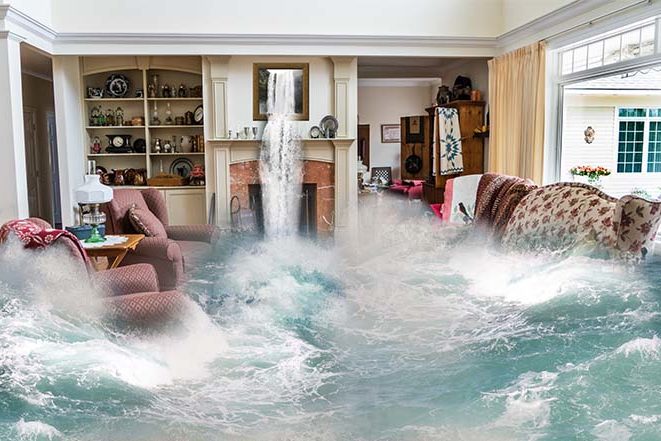Table of Contents
How To Dry Out A House After A Flood The Right Way
The most important thing to consider before going into a house after a flood is safety. If you have a significant amount of water in your basement, either call the power company and tell them to disconnect the service or ask an electrician to check to make sure it is safe. Since furnaces and some water heaters are connected to the electrical system, stepping into standing water in the same area could be dangerous. In addition, homeowners should be aware that if flood water comes from a river, it could contain sewage. Bacterial content isn’t necessarily an issue, but it could be.
Once a flood has subsided, the house must be dried out as quickly as possible. Mold will start to grow within 48 to 72 hours. Carpets, pads, and furniture that were submerged should be removed, and drywall that was soaked should be cut out and discarded.
There are three basic methods for drying out a wet house.
1. Air Fans
The most basic is to get air circulating through it by using fans.
2. Dehumidifiers
Another method that is faster and more effective, but more expensive, is to use dehumidifiers. Dehumidifiers are used to remove deeply embedded moisture. If you have a wood floor, or if the framing in the walls has been saturated, a dehumidifier will pull the moisture out of the wood.
And while it is helpful to leave windows and doors open when using fans to dry out a building, they should be kept closed when using a dehumidifier. If humid outdoor air is allowed to enter the home, the dehumidifier will be fighting against the relative humidity outside. A dehumidifier in a closed room can reduce the relative humidity to a low of 20 percent. When the air is that dry, it will wick moisture out of the walls and floors.
3. HVAC Systems: Running the AC
Another way to dry out a house is to use the heating system along with the central air-conditioning system or window units. Warm air will hold more moisture than cooler air, so a homeowner can close all the doors and windows and run the air-conditioning. Once the house has cooled and the air is dry, the air-conditioning should be turned off and the heat turned on. When the temperature has reached, say, 80 degrees or so, the heat should be turned off and the air-conditioning turned back on until all the warm air has been removed. The cycle should be repeated until the house is dry.
Homeowners who use this strategy must monitor the process closely. If you leave the heat on too long, you’re basically turning your home into a greenhouse.
What Happen Immediately After A Flood in Idaho
If a house is not dried out quickly enough and mold begins to grow, the owner should take steps to eliminate it. You need to physically remove the mold by scrubbing it off. You can use a strong detergent, a little bleach wouldn’t hurt, and make sure to wear gloves and an N95 respirator.
Contact us at 208-377-1877 for more information on how to remove mold from your home or workplace.
CTR is available 24/7 for any flood restoration or water damage restoration work in the Boise, Eagle, Meridian, Nampa, Caldwell, Kuna, Twin Falls, and their surrounding areas.








